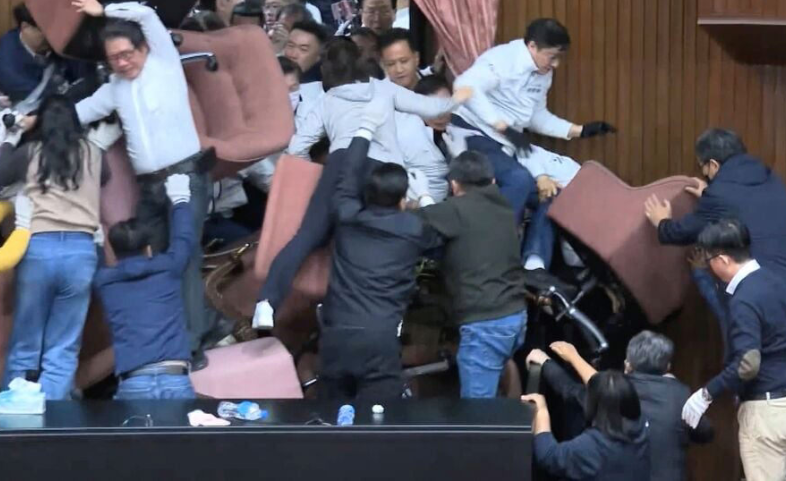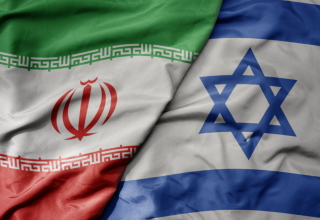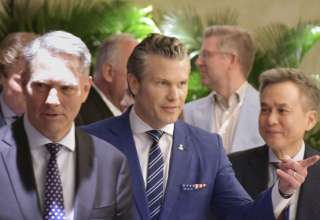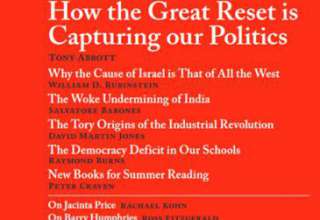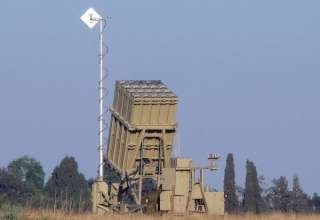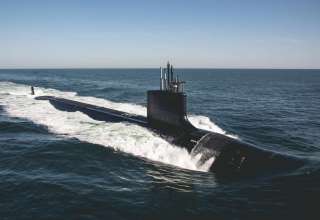By Richard Stone
Political controversy between the two major parties in Taiwan has carried all the hallmarks of classic US-led Cold War rivalries. The ruling Democratic Progressive Party (DPP), which managed to form a minority government following presidential elections last year, has recently attempted to challenge the main opposition nationalist Kuomintang (KMT).
Constitutional attempts by the DPP to deal with the political stalemate, however, have to date failed to achieve objectives in a spectacular fashion and defeat. A further DPP-led round is, nevertheless, scheduled for late August, where another smaller group of KMT politicians will be targeted.
A recent DPP political initiative to oust 24 KMT M.P.s failed and has led to a heightening of tensions between the two major parties. (1) The electorate voted against the DPP move to overcome the stalemate: the DPP is, at present, faced with holding a minority government with 51 seats, while the rival KMT hold 52 seats. Neither party has overall control of the Taiwanese parliament; the DPP require at least six further seats at present held by the KMT to form a majority government.
Behind the scenes, however, a classic US-led Cold War scenario is being played-out. The DPP, being in line with pro-independence positions, is strongly backed by the US, the Pentagon, the US military industrial complex: the relationship is along lines of a puppet-master pulling strings over a puppet which dances and sings when required. The KMT retains a more conciliatory position toward China, and is, therefore, subject to US-led scrutiny.
The Taiwan Straits remains one of the potential flashpoints for US-China diplomatic hostilities; the Cold War is being played-out across a narrow strip of water separating China with Taiwan. The US also has a large presence in Taiwan, while officially and diplomatically recognising China, in line with the One China policy.
It is no surprise, therefore, to find the DPP regularly launching witch-hunts against the KMT, with allegations of pro-China espionage. They note, for example, that China ‘has frequent contacts with the main opposition national party’, implying connivance and influence with China’s front organisations. (2) Another piece of supposed investigative journalism recently conducted on behalf of the DPP alleged that China had control of more than 5,000 spies in Taiwan. (3) It was designed to serve a deeper purpose than mere newsprint for casual readership.
Taiwan’s spy agencies are based in the National Security Bureau (NSB), based in the Yang Ming Mountain district of Taipei. Its main focus is monitoring China. Its six divisions include: International Intelligence, China – Internal Security, Strategic Intelligence Analysis, Technological Intelligence, Telecommunications Security. (4) It permeates all level of Taiwanese society. The NSB is also authorised to ‘integrate, co-ordinate and support national security-related intelligence operations conducted by various functional services within the intelligence and law enforcement community. Effectively it can act as a Joint Intelligence Organisation’. (5)
There remains little ambiguity about which foreign intelligence services the NSB retains strong links with.
The US State Department has about five hundred intelligence personnel based in Taipei; they are officially noted as being on ‘temporary leave’ from their employer. (6) They, nevertheless, conduct Cold War operations for the Pentagon, and push Taiwanese diplomacy into the wider Indo-Pacific region through the DPP-led New Southbound Policy. (7)
Washington is currently conducting a review ‘of its military deployments worldwide – the expectation is it will lead to drawdowns in Europe’. (8) With the official position stated by Defence Secretary Pete Hegseth while addressing the Senate Armed Forces committee in June, that ‘Beijing is preparing for war in the Indo-Pacific and the US is laser focused on strengthening deterrence across the region’, there would appear little ambiguity about into which region the Pentagon is planning to deploy further personnel. (9)
In fact, it has been noted that ‘Trump’s view, also conveyed by Hegseth, is that the US is shifting its global priorities away from Europe and NATO to the American continental homeland and the Indo-Pacific region’. (10) Once it takes place, the strategic importance of Taiwan will be correspondingly enhanced still further.
The US intelligence presence in Taiwan is also directly linked to military arms sales and defence budgets. While the budgets vary with different US presidential administrations, they remain very large indeed when viewed with the geographical size of Taiwan.
US ARMS SALES TO TAIWAN
1977-81 – $548.7 million
1981-89 – $1579.64
1989-93 – $6847
1993-01 – $17,070.6
2001-09 – $29,938
2009-17 – $14,070
2017-21 – $18,047.86
2021-25 – $7,727.4
Grand Total = $83,159.2 million (11)
It is interesting to note, therefore, the recent heightening of political rivalries taking place in Taiwan took place after the DPP alleged that ‘the KMT and its allies … blocked … key legislation, especially the defence budget, and passing controversial changes seen as diminishing the power of the executive and favouring China’. (12) The official statements are invariably timed alongside the circulation of bizarre conspiracy theories on-line which allege the KMT has been hollowed out by the Chinese intelligence services to serve the interests of Beijing.
In effect, the KMT while blocking the Taiwanese defence budget has been held responsible for challenging the US military-industrial complex. And, Taiwanese ‘diplomacy’, for the US, is big business. It is known, for example, that the US has ‘been hoarding missiles for several years to strengthen its position in the Pacific region against China’. (13)
It was no great surprise, therefore, to find the Pentagon, with their compliant Taiwanese personnel, organised a major military exercise immediately prior to the attempt by the DPP to oust KMT M.P.s. The 2025 Annual Han Kuang exercises, run in conjunction with civilian drills, included 22,000 reservists, and were extended to ten days duration. The exercises the previous year were only of five days duration. (14) The 2025 exercises also included extensive simulations which included ‘grey zone’ provision, composed of tactical manoeuvres falling short of ‘real-war scenarios’. (15)
It is also highly significant to note that US intelligence assessments have predicted China will attempt to invade Taiwan in 2027. Their evidence, however, is not available in the public domain and would appear highly speculative. It, nevertheless, serves the military-industrial agenda, pursued along the lines of preserving the importance of Wall Street.
Despite influence being brought to bear upon the Taiwanese electorate to support the DPP minority government for ousting 24 KMT M.P.s, they voted to reject the plan, signifying a substantial shift has already taken place in popular opinion. It would appear the electorate favour a more conciliatory approach to dealing with China and favour closer relations.
Beijing, meanwhile, refuse to even deal with the DPP.
A statement from DPP Secretary-General Lin Yu-chang clearly reflected their disappointment at not winning the vote. He clarified their position as ‘humbly accepting the results … and they had … responsibility to reflect on public sentiments more cautiously and adjust its approach to meet people’s expectations’. (16) They had misread the electorate.
The next round of the DPP plan, however, is scheduled for 23 August, where they will target a further 7 KMT M.P.s. The influence brought to bear, this time, is that if the DPP plan fails again, the President Lai Ching-te administration will face ‘strong resistance within the legislature before elections expected in 2028’, the year after US predictions of China’s plan to invade. (17) Whether an official presidential statement referring to the ‘national direction of resisting communists and protecting Taiwan’, carries any credibility with Taiwanese voters this time round remains to be seen. (18)
Is the DPP presidential administration merely clutching at straws to serve ‘US interests’?
1. Taiwan rejects bid to oust pro-China bloc, Australian, 28 July 2025.
2. Taiwan’s spy agency, AP., 12 January 2025.
3. China might have more than 5,000 spies in Taiwan, Website: 1945 – 1 May 2025.
4. Taiwan: Espionage, Spies and Secrets, Richard M. Bennett, (London, 2002), pp. 305-06.
5. Ibid.
6. Beijing keeps a wary eye on new US Taipei outpost, The Age, 18 June 2018.
7. Ibid.
8. Europe hopeful on troop numbers, Australian, 29 July 2025.
9. US is carved into the landscape, The Weekend Australian, 12-13 July 2025.
10. Trump’s strategic blunders threaten US authority, Australian, 26 February 2025.
11. Wikipedia: List of US arms sales to Taiwan, which has provided details of each individual arms sale with dates.
12. Australian, op.cit., 28 July 2025.
13. Missiles demand lifts US makers, The Weekend Australian, 26-27 July 2025.
14. Taiwan launches largest drills, Australian, 10 July 2025.
15. Ibid.
16. Australian, op.cit., 28 July 2025.
17. Ibid.
18. Ibid.

